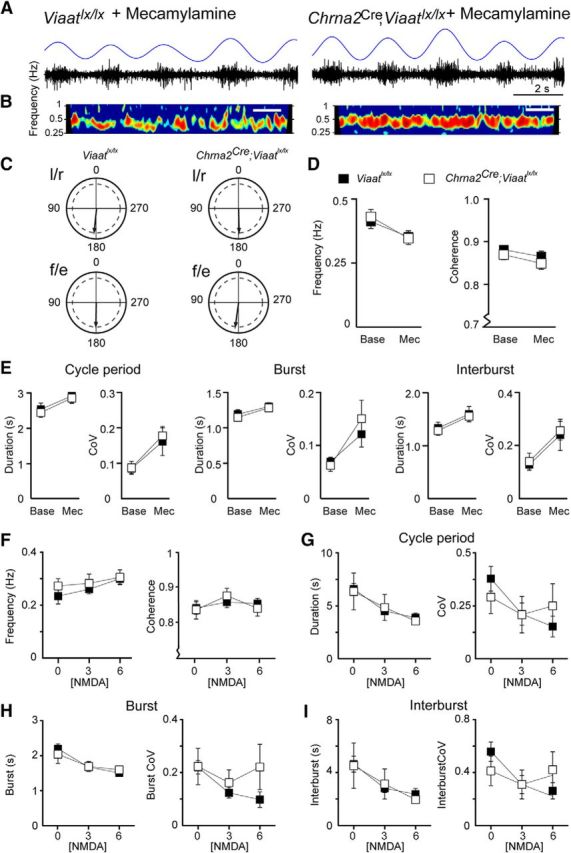Figure 5.

Mecamylamine and NMDA had similar effects on the fictive locomotor rhythm. A, Example raw traces of locomotor-like activity recorded from ventral roots of control (Viaatlx/lx) and Chrna2Cre; Viaatlx/lx spinal cords after the application of mecamylamine (50 μm) to the perfusate. The rectified, smoothened trace is shown in blue. B, Coherence power spectra of l/r alternation activity after exposure to mecamylamine for 50 min. Calibration: 40 s. C, The application of mecamylamine did not alter the locomotor pattern in control or Chrna2Cre; Viaatlx/lx spinal cords; normal left/right and flexor/extensor alternation was maintained. Arrows denote the mean phase value given by the coherence band; the dashed inner line denotes significance. D, Mecamylamine induced a similar reduction in the frequency (left) and coherence (right) in Chrna2Cre; Viaatlx/lx and control spinal cords. E, Mecamylamine (Mec) increased the cycle period, burst, and interburst duration as well as the CoV (right) for these parameters during locomotor-like activity in both control and Chrna2Cre; Viaatlx/lx cords compared with baseline (Base). F, Increasing NMDA concentrations increased the locomotor frequency and coherence in both control and Chrna2Cre; Viaatlx/lx spinal cords. G–I, Increasing NMDA concentrations shortened the locomotor cycle period (G), burst (H), and interburst (I) duration but did not influence the coefficient of variation for these parameters during locomotor-like activity in both control and Chrna2Cre; Viaatlx/lx spinal cords. Data represent the mean ± SEM. Two-tailed Student's t test and two-way ANOVA.
